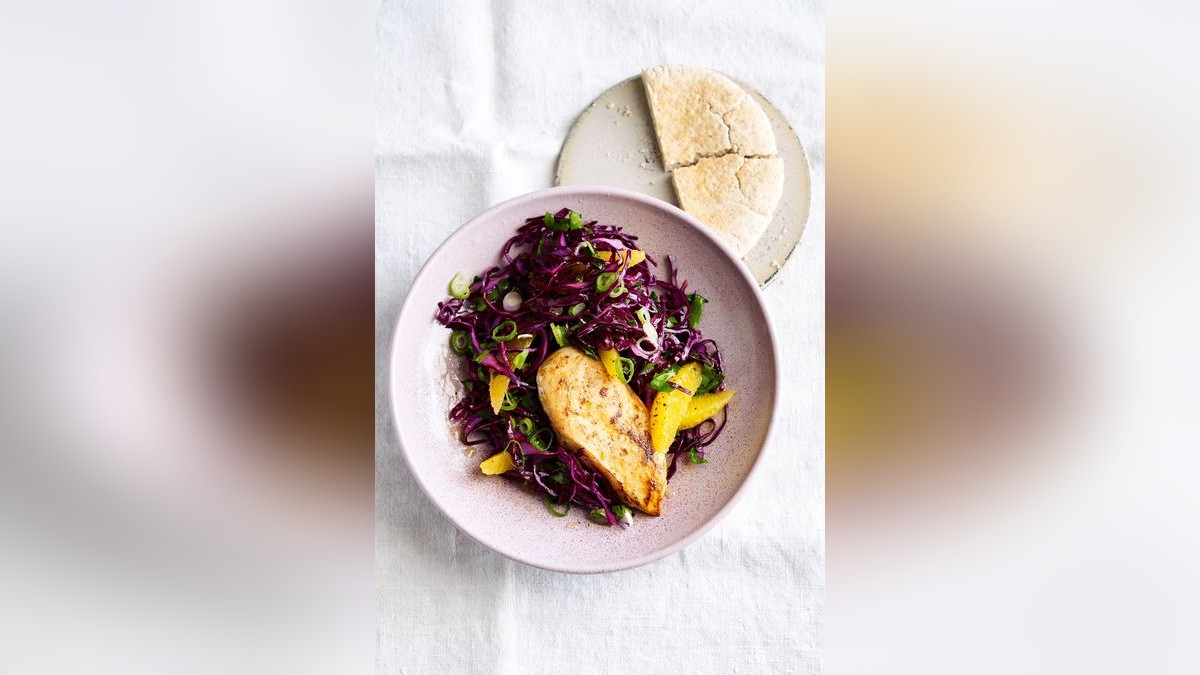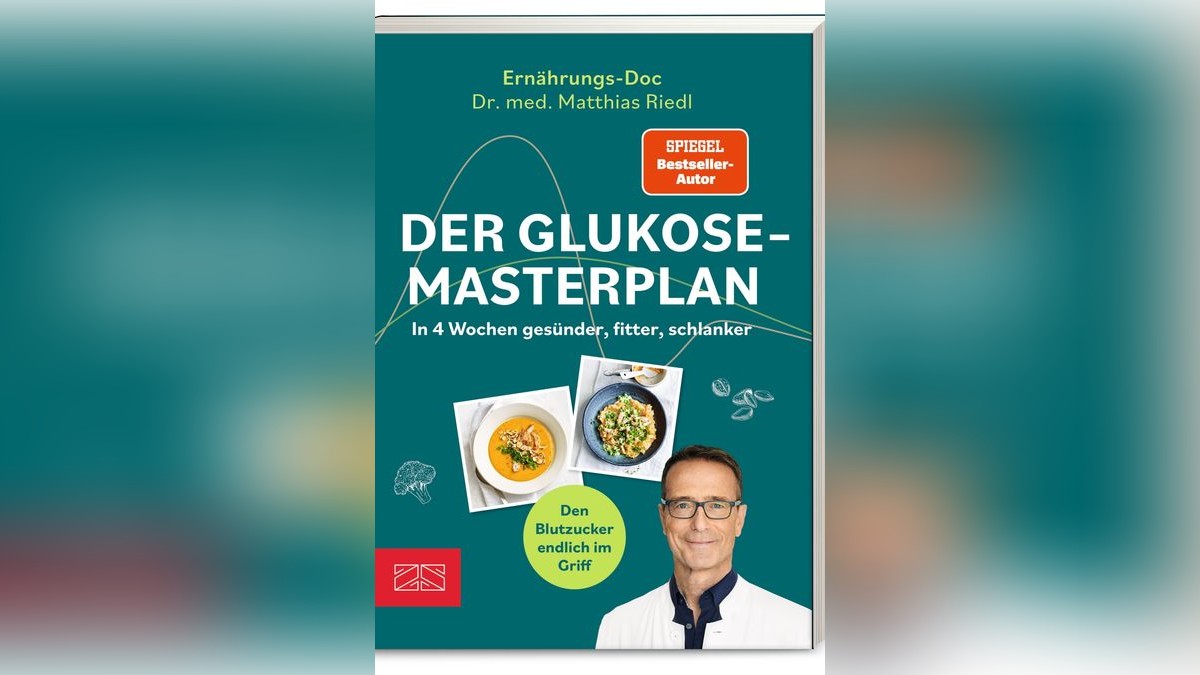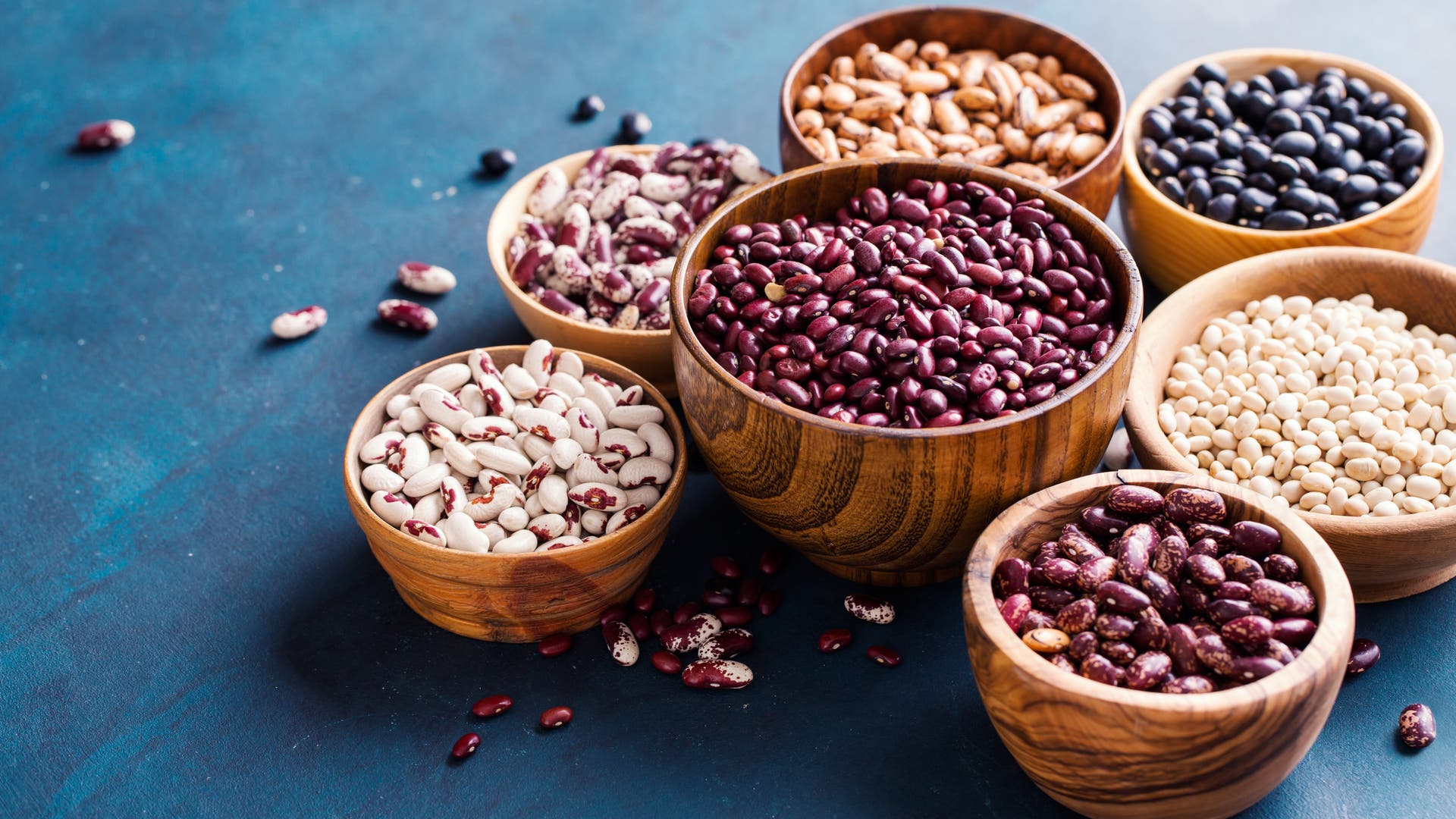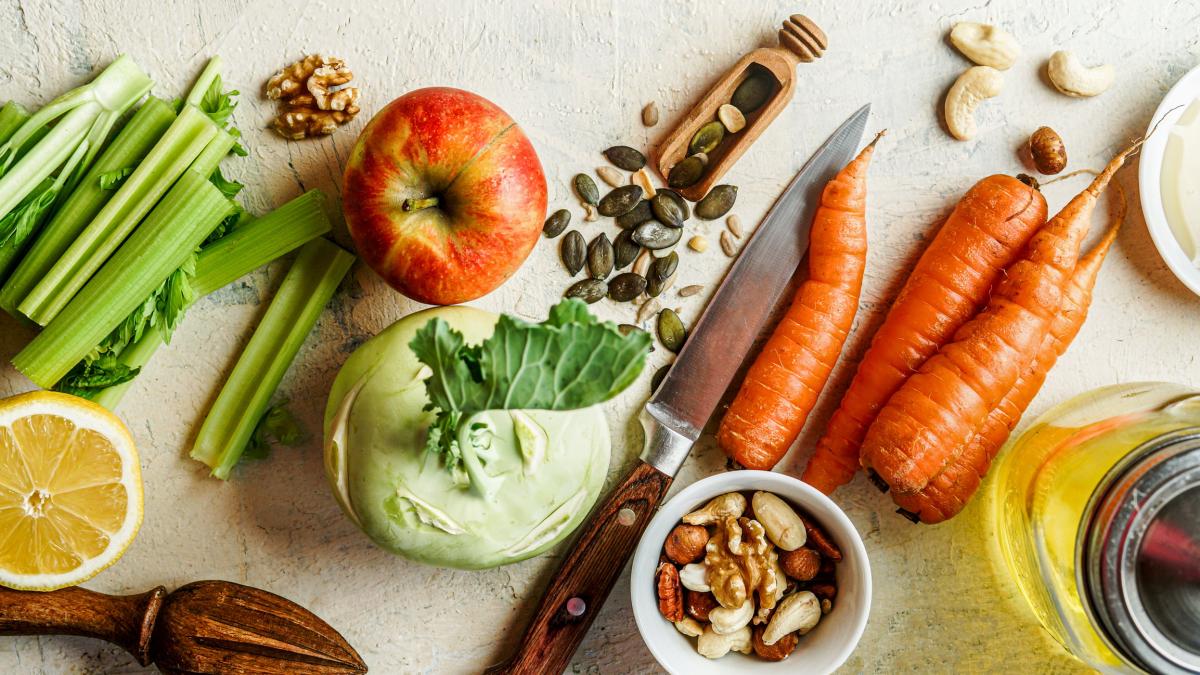Hamburg. The nutrition doctor has developed a master plan in his new book. This is how you can become fitter and healthier in four weeks.
One in five Germans has elevated blood sugar levels. The nutritionist Dr. Matthias Riedl has written a new guidebook, “The Glucose Master Plan”, to help you get your blood sugar under control. “This is the key to not only losing weight, not only preventing diseases, but also being fitter,” says the Nutrition Doc in the new podcast episode “Dr. Matthias Riedl. This is how healthy eating works.”
The numbers are frightening. “If you look at 60 and 70 year olds, one in three has some kind of disorder in this area, so it’s worth it for everyone to optimize their sugar metabolism.”
Nutrition: High blood sugar increases the risk of many diseases
From a fasting blood sugar level of 126 onwards, we speak of diabetessays Riedl. “But even with a value between 100 and 126, those affected have elevated blood sugar. A fasting blood sugar level of 80 to 90 is normal.”
Increased blood sugar increases the risk for Nerve damage and for Heart attackSo-called prediabetes, the precursor to diabetes, does not necessarily turn into diabetes, but it does pose a risk to the vascular system. A value below 100 is therefore better and normal.
Nutrition Doc: Vessels in kidneys and eyes are at risk
The normal Long-term blood sugar level (HbA1c) is between 5.3 and 5.6. “It is noticeable when it goes up to six percent. Anything over 6.5 can definitely be classified as diabetes.” You have to look at both values. If the long-term value increases continuously every year, you should take countermeasures, advises the nutritionist. The sooner you take action, the better.
According to Riedl, even slightly elevated blood sugar levels promote inflammation in the body. This can damage the small vessels in the kidneys and eyes. “These are the two organs that react very, very sensitively to this, kidney function decreases and we have a higher risk of retinal damage.” Many other diseases such as cancer or depressions are also associated with sugar metabolism disorders.
Dr. Matthias Riedl recommends self-testing to identify risks
The Nutritional medicine specialistthe diseases of their Parents to look at it and see what can be done about it, “because 75 percent of diseases are genetic, but the course of this genetics can still be influenced by behaving and eating accordingly.” Diabetes is a creeping disease, and prediabetes even more so. A blood test, for example as part of a preventative care procedure, can provide more precise information.
In Riedl’s book there is a Self-testwhich you can use to find out whether your blood sugar is in balance. There are questions about stress, vegetable consumption, weight and diabetes in the family, for example. The evaluation gives you a good indication of how high your own risk is, says Riedel. “An important factor is age. The older we get, the more unstable our carbohydrate metabolism becomes. You have to be aware of which behaviors can also promote this. That is very important.”
Nutrition Doc: The metabolism definitely needs breaks
In his book, Riedl presents a four-week Master plan He suggests three new rules for each week. In the first week, it’s about realizing that carbohydrate metabolism needs breaks. “That’s one of the basic measures. We need to get our blood sugar down again after eating, and then the system needs a break.”
Constant overwork is not only for the Carbohydrate metabolism dramatic. “Firstly, the pancreas has to work incredibly hard, producing and secreting insulin. Secondly, this constant eating leads to the liver and pancreas becoming fatty,” says the medical director of Medicum Hamburg.
The pancreas is not as good-natured as the liver. It is therefore important to take breaks, for example you can question intermittent fasting, but also constant snacking. That is enough work for the first week.
Nutrition doctor gives tips on the order of eating
In the second week, when you have gotten used to the breaks in eating, it’s all about influencing your blood sugar levels with the order in which you eat. “You can do this by eating vegetables and fiber, for example, a salad with apple cider vinegar, and then proteins and fats. This order is the smoothest for your blood sugar levels,” says Riedl.
In the third week, you should focus on carbohydrates. “It’s not just about quality, it’s about focusing on sugar, sharpening your focus. The fourth week is also about reducing stress.”
The nutritionist explains: “You wouldn’t believe how stress actually negatively affects our blood sugar and the entire metabolic system around carbohydrates, how stress can also make you fat and how a lack of sleep. Lack of sleep doesn’t just shorten your life. 60 percent of the population sleep badly – and that has consequences for carbohydrate metabolism.” The book also contains many specific nutritional tips and recipes.
The top foods to keep blood sugar stable:
- Almonds (if you don’t like them: walnuts, pistachios or hazelnuts)
- legumes
- Oatmeal)
- Green leafy vegetables
- Alliums such as garlic
- Eggs as protein carriers
- Low-sugar fruits such as berries, apricots, sour apples, grapefruits, sour cherries, lemons, oranges
more on the subject
The master plan is also suitable for people who already have a blood sugar disorder, says the nutritionist. “The book is for everyone who wants to lose weight. Because the ups and downs in blood sugar that I cause with food are linked to our tendency to gain weight and to the tendency to have diabetes and prediabetes. And that affects a large part of the population.”
The master plan has also been forged for overweight people and people who want to bring more fitness into their lives.
Recipe tip: Spicy chicken with red cabbage salad
For 2 people, preparation time 30 minutes, per portion approx. 495 kcal, 46g protein, 11g fat, 48g carbohydrates
Ingredients:
1/4 red cabbage (approx. 300 g), salt, 2 spring onions, 1/2 tsp liquid honey, 1/4 tsp ground cumin, 2 tbsp apple cider vinegar, 3 tsp rapeseed oil, pepper, 1/2 bunch chopped parsley, 1 small orange, 2 chicken breast fillets (approx. 150 g each), 1 heaped tsp harissa (North African spice paste), 1 wholemeal pita bread (approx. 80 g)
Preparation:
For the salad: Remove the outer leaves and the hard stalk from the red cabbage, cut the cabbage into thin strips. Place in a bowl and sprinkle with 1/2 teaspoon of salt and knead vigorously with your hands, then leave to rest for a while.
In the meantime, clean and wash the spring onions and cut them into thin rings. For the dressing, mix the honey, cumin, vinegar, 2 teaspoons of oil and pepper in a salad bowl. Mix in the red cabbage, spring onions and parsley.
Peel the orange generously, removing the white skin as well. Cut out the fillets between the individual membranes and halve them, collect the juice that comes out and squeeze the rest of the orange well. Fold the orange fillets and juice into the salad and season with salt, pepper and vinegar.
Wash the chicken and pat dry. Mix the harissa paste with the remaining (1 tsp) oil and salt, then coat the fillets all over. Fry in a large non-stick pan without fat for 5 to 6 minutes on each side. To serve, toast the pita bread briefly in the toaster, then halve and serve with the meat and salad.

Spicy chicken with red cabbage salad from: Dr. Matthias Riedl. The glucose master plan. Healthier, fitter, slimmer in 4 weeks. ZS Verlag 2024, 17.99 euros.
© © 2024 ZS-Verlag GmbH/ Photographer | Coco Lang/© 2024 ZS-Verlag GmbH/ Photographer

Dr. Matthias Riedl. The Glucose Master Plan. Healthier, fitter, slimmer in 4 weeks. ZS Verlag 2024, 17.99 euros.
© ZS – a publishing house of the Edel publishing group | ZS – a publishing house of the Edel publishing group




